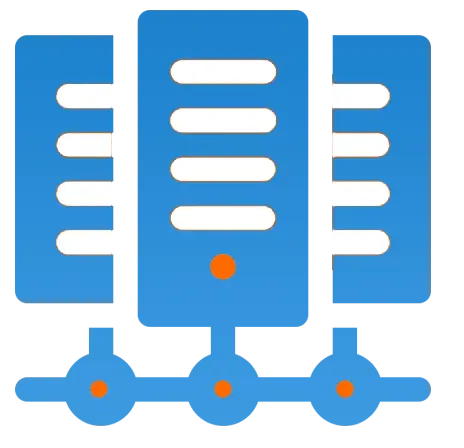Get 69% Off on Cloud Hosting : Claim Your Offer Now!
- Products
-
Compute
Compute
- Predefined TemplatesChoose from a library of predefined templates to deploy virtual machines!
- Custom TemplatesUse Cyfuture Cloud custom templates to create new VMs in a cloud computing environment
- Spot Machines/ Machines on Flex ModelAffordable compute instances suitable for batch jobs and fault-tolerant workloads.
- Shielded ComputingProtect enterprise workloads from threats like remote attacks, privilege escalation, and malicious insiders with Shielded Computing
- GPU CloudGet access to graphics processing units (GPUs) through a Cyfuture cloud infrastructure
- vAppsHost applications and services, or create a test or development environment with Cyfuture Cloud vApps, powered by VMware
- Serverless ComputingNo need to worry about provisioning or managing servers, switch to Serverless Computing with Cyfuture Cloud
- HPCHigh-Performance Computing
- BaremetalBare metal refers to a type of cloud computing service that provides access to dedicated physical servers, rather than virtualized servers.
-
Storage
Storage
- Standard StorageGet access to low-latency access to data and a high level of reliability with Cyfuture Cloud standard storage service
- Nearline StorageStore data at a lower cost without compromising on the level of availability with Nearline
- Coldline StorageStore infrequently used data at low cost with Cyfuture Cloud coldline storage
- Archival StorageStore data in a long-term, durable manner with Cyfuture Cloud archival storage service
-
Database
Database
- MS SQLStore and manage a wide range of applications with Cyfuture Cloud MS SQL
- MariaDBStore and manage data with the cloud with enhanced speed and reliability
- MongoDBNow, store and manage large amounts of data in the cloud with Cyfuture Cloud MongoDB
- Redis CacheStore and retrieve large amounts of data quickly with Cyfuture Cloud Redis Cache
-
Automation
Automation
-
Containers
Containers
- KubernetesNow deploy and manage your applications more efficiently and effectively with the Cyfuture Cloud Kubernetes service
- MicroservicesDesign a cloud application that is multilingual, easily scalable, easy to maintain and deploy, highly available, and minimizes failures using Cyfuture Cloud microservices
-
Operations
Operations
- Real-time Monitoring & Logging ServicesMonitor & track the performance of your applications with real-time monitoring & logging services offered by Cyfuture Cloud
- Infra-maintenance & OptimizationEnsure that your organization is functioning properly with Cyfuture Cloud
- Application Performance ServiceOptimize the performance of your applications over cloud with us
- Database Performance ServiceOptimize the performance of databases over the cloud with us
- Security Managed ServiceProtect your systems and data from security threats with us!
- Back-up As a ServiceStore and manage backups of data in the cloud with Cyfuture Cloud Backup as a Service
- Data Back-up & RestoreStore and manage backups of your data in the cloud with us
- Remote Back-upStore and manage backups in the cloud with remote backup service with Cyfuture Cloud
- Disaster RecoveryStore copies of your data and applications in the cloud and use them to recover in the event of a disaster with the disaster recovery service offered by us
-
Networking
Networking
- Load BalancerEnsure that applications deployed across cloud environments are available, secure, and responsive with an easy, modern approach to load balancing
- Virtual Data CenterNo need to build and maintain a physical data center. It’s time for the virtual data center
- Private LinkPrivate Link is a service offered by Cyfuture Cloud that enables businesses to securely connect their on-premises network to Cyfuture Cloud's network over a private network connection
- Private CircuitGain a high level of security and privacy with private circuits
- VPN GatewaySecurely connect your on-premises network to our network over the internet with VPN Gateway
- CDNGet high availability and performance by distributing the service spatially relative to end users with CDN
-
Media
-
Analytics
Analytics
-
Security
Security
-
Network Firewall
- DNATTranslate destination IP address when connecting from public IP address to a private IP address with DNAT
- SNATWith SNAT, allow traffic from a private network to go to the internet
- WAFProtect your applications from any malicious activity with Cyfuture Cloud WAF service
- DDoSSave your organization from DoSS attacks with Cyfuture Cloud
- IPS/ IDSMonitor and prevent your cloud-based network & infrastructure with IPS/ IDS service by Cyfuture Cloud
- Anti-Virus & Anti-MalwareProtect your cloud-based network & infrastructure with antivirus and antimalware services by Cyfuture Cloud
- Threat EmulationTest the effectiveness of cloud security system with Cyfuture Cloud threat emulation service
- SIEM & SOARMonitor and respond to security threats with SIEM & SOAR services offered by Cyfuture Cloud
- Multi-Factor AuthenticationNow provide an additional layer of security to prevent unauthorized users from accessing your cloud account, even when the password has been stolen!
- SSLSecure data transmission over web browsers with SSL service offered by Cyfuture Cloud
- Threat Detection/ Zero DayThreat detection and zero-day protection are security features that are offered by Cyfuture Cloud as a part of its security offerings
- Vulnerability AssesmentIdentify and analyze vulnerabilities and weaknesses with the Vulnerability Assessment service offered by Cyfuture Cloud
- Penetration TestingIdentify and analyze vulnerabilities and weaknesses with the Penetration Testing service offered by Cyfuture Cloud
- Cloud Key ManagementSecure storage, management, and use of cryptographic keys within a cloud environment with Cloud Key Management
- Cloud Security Posture Management serviceWith Cyfuture Cloud, you get continuous cloud security improvements and adaptations to reduce the chances of successful attacks
- Managed HSMProtect sensitive data and meet regulatory requirements for secure data storage and processing.
- Zero TrustEnsure complete security of network connections and devices over the cloud with Zero Trust Service
- IdentityManage and control access to their network resources and applications for your business with Identity service by Cyfuture Cloud
-
-
Compute
- Solutions
-
Solutions
Solutions
-
 Cloud
Hosting
Cloud
Hosting
-
 VPS
Hosting
VPS
Hosting
-
GPU Cloud
-
 Dedicated
Server
Dedicated
Server
-
 Server
Colocation
Server
Colocation
-
 Backup as a Service
Backup as a Service
-
 CDN
Network
CDN
Network
-
 Window
Cloud Hosting
Window
Cloud Hosting
-
 Linux
Cloud Hosting
Linux
Cloud Hosting
-
Managed Cloud Service
-
Storage as a Service
-
 VMware
Public Cloud
VMware
Public Cloud
-
 Multi-Cloud
Hosting
Multi-Cloud
Hosting
-
 Cloud
Server Hosting
Cloud
Server Hosting
-
 Bare
Metal Server
Bare
Metal Server
-
 Virtual
Machine
Virtual
Machine
-
 Magento
Hosting
Magento
Hosting
-
Remote Backup
-
 DevOps
DevOps
-
 Kubernetes
Kubernetes
-
 Cloud
Storage
Cloud
Storage
-
NVMe Hosting
-
 DR
as s Service
DR
as s Service
-
-
Solutions
- Marketplace
- Pricing
- Resources
- Resources
-
By Product
Use Cases
-
By Industry
- Company
-
Company
Company
-
Company
Advanced Kubernetes concepts: An in-depth look at the inner workings of Kubernetes
Table of Contents
Kubernetes is an open-source container orchestration system for automating the deployment, scaling, and management of containerized applications. It was originally developed by Google and was later donated to the Cloud Native Computing Foundation (CNCF).
Kubernetes was designed to provide a platform-agnostic way to manage containerized workloads and services, making it easier for organizations to deploy and run applications in a variety of environments. It allows developers to deploy their applications in a consistent and reproducible way, without having to worry about the underlying infrastructure.
Kubernetes is commonly used in the deployment and management of microservices-based applications, but it can also be used to manage other types of workloads. It provides a range of features for scaling applications, rolling out updates, and self-healing, which makes it a popular choice for running distributed systems in production environments.
Overall, Kubernetes is a powerful tool for managing containerized applications at scale, and it has become the de facto standard for container orchestration in the cloud-native ecosystem.
Overview of the architecture of a Kubernetes system
The architecture of a Kubernetes system consists of a set of worker machines, called nodes, that run containerized applications. The nodes are managed by a central control plane, which consists of a set of components that are responsible for the overall orchestration of the system.
The main components of a Kubernetes system include:
- Nodes: A node is a worker machine in a Kubernetes cluster. It runs one or more pods, which are the smallest deployable units in Kubernetes. Nodes are managed by the control plane.
- Pods: A pod is the basic execution unit of a Kubernetes application. It is a logical host for one or more containers, which share the same network namespace, storage, and lifecycle. Pods are ephemeral and can be created, destroyed, and replaced by the control plane as needed.
- Containers: A container is a lightweight, standalone, executable package that contains everything needed to run an application, including the application code, libraries, dependencies, and runtime. Containers are isolated from each other and can be easily moved between nodes.
- Control plane: The control plane is the central management component of a Kubernetes system. It consists of a set of processes that run on the master node and is responsible for the overall orchestration of the cluster. The control plane includes components such as the API server, scheduler, and controller manager, which handle tasks such as scheduling pods, managing nodes, and maintaining the desired state of the cluster.
To deploy and manage applications on Kubernetes, users define desired states for their applications using manifest files, which are written in YAML or JSON and specify things like the number of replicas, the container image to use, and the resources needed by the application. The control plane then ensures that the actual state of the cluster matches the desired state by creating, updating, or deleting pods as needed.
Kubernetes uses a scheduler to decide which nodes should run which pods, based on factors such as the resources required by the pod and the available capacity on the nodes. The scheduler tries to balance the workload across the nodes in the cluster, taking into account constraints such as node labels and affinity rules.
Overall, Kubernetes provides a flexible and scalable way to manage containerized applications, allowing users to deploy, scale, and update their applications with minimal effort.
Step-by-step instructions for setting up a Kubernetes cluster using a specific method
There are several methods for setting up a Kubernetes cluster, depending on your needs and preferences. Here are some common options:
- Using a managed service: One of the easiest ways to set up a Kubernetes cluster is to use a managed service such as Google Kubernetes Engine (GKE), Amazon Elastic Container Service for Kubernetes (EKS), or Azure Kubernetes Service (AKS). These services handle the provisioning and management of the underlying infrastructure, allowing you to focus on deploying your applications.
- Installing on bare metal: If you want to set up a Kubernetes cluster on your own physical servers or virtual machines, you can install Kubernetes directly on the hardware. This requires more effort and technical expertise, but gives you more control over the infrastructure and can be a good option for certain scenarios.
- Using a local development environment: If you want to test and develop applications on Kubernetes without setting up a full-scale cluster, you can use a local development environment such as Minikube or MicroK8s. These tools allow you to run a single-node Kubernetes cluster on your laptop or workstation.
Different ways to deploy applications on Kubernetes
There are several ways to deploy applications on Kubernetes. Some common methods include:
- Using YAML files: One of the most basic ways to deploy an application on Kubernetes is to use a YAML file that defines the desired state of the application. The YAML file can specify things like the number of replicas, the container image to use, and the resources needed by the application. To deploy the application, you can use the kubectl command-line tool to apply the YAML file to the cluster.
- Using Helm charts: Helm is a package manager for Kubernetes that makes it easier to deploy complex applications. A Helm chart is a collection of YAML templates that define the resources needed by an application. To deploy an application using a Helm chart, you can use the helm command-line tool to install the chart into the cluster.
- Using a continuous integration/continuous deployment (CI/CD) platform: Many organizations use a CI/CD platform such as Jenkins, GitHub Actions, or Azure DevOps to automate the deployment of their applications. These platforms can be configured to build and deploy applications to a Kubernetes cluster as part of the CI/CD pipeline.
Description of tools and techniques for monitoring and troubleshooting a Kubernetes cluster
There are several common tasks involved in managing and maintaining a Kubernetes cluster, including:
- Scaling: Kubernetes allows you to easily scale the number of replicas of an application up or down based on demand. To scale an application, you can use the kubectl command-line tool or the Kubernetes API to update the number of replicas in the deployment manifest.
- Rolling updates: Kubernetes supports rolling updates, which allow you to update the containers in a deployment without downtime. To perform a rolling update, you can use the kubectl command-line tool or the Kubernetes API to update the container image in the deployment manifest. Kubernetes will then gradually roll out the update to the replicas, ensuring that there is always a working version of the application available.
- Debugging: When things go wrong in a Kubernetes cluster, it can be challenging to identify the root cause of the problem. To troubleshoot issues, you can use tools such as kubectl and the Kubernetes dashboard to view logs, events, and other cluster metadata. You can also use tools like kubectl exec and kubectl port-forward to debug issues directly in the containers.
To monitor and troubleshoot a Kubernetes cluster, you can use a combination of built-in tools and third-party solutions. Some common options include:
- Kubernetes dashboard: The Kubernetes dashboard is a web-based UI that provides visibility into the state of the cluster and allows you to view and manage various cluster resources.
- kubectl: kubectl is the command-line interface for Kubernetes, and it provides a range of commands for interacting with the cluster. You can use kubectl to view logs, events, and other metadata, as well as to perform tasks such as scaling and rolling updates.
- Prometheus: Prometheus is an open-source monitoring and alerting system that is commonly used in Kubernetes environments. It can be configured to scrape metrics from the Kubernetes API server and alert on predefined thresholds.
- Elastic Stack: The Elastic Stack (formerly known as the ELK stack) is a set of tools for collecting, storing, and analyzing log data. It can be used to monitor the logs generated by a Kubernetes cluster and identify issues.
By using a combination of these tools, you can effectively monitor and troubleshoot your Kubernetes cluster to ensure that it is running smoothly.
Conclusion:
In conclusion, Kubernetes is a powerful and widely-used container orchestration system that makes it easier to deploy, scale, and manage containerized applications. It provides a range of features for self-healing, scaling, and rolling updates, which make it a popular choice for running distributed systems in production environments.
Looking out for much technological and cloud related help, get in touch with our experts today!
Recent Post

Stay Ahead of the Curve.
Join the Cloud Movement, today!
© Cyfuture, All rights reserved.
Send this to a friend

 Pricing
Calculator
Pricing
Calculator
 Power
Power
 Utilities
Utilities VMware
Private Cloud
VMware
Private Cloud VMware
on AWS
VMware
on AWS VMware
on Azure
VMware
on Azure Service
Level Agreement
Service
Level Agreement 


















